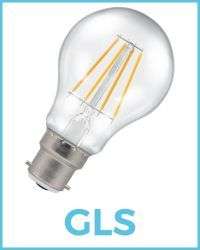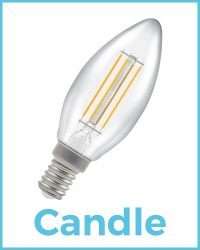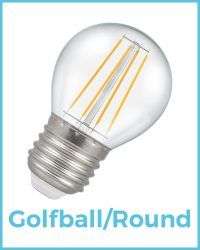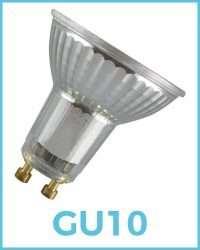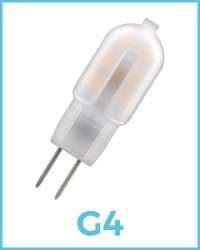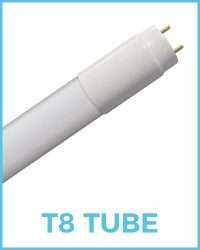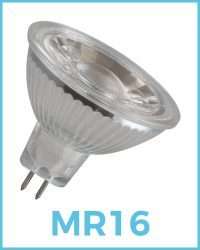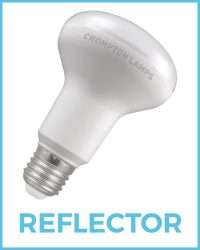LED light bulbs have the potential to save any household money, thanks to their incredible energy efficiency and long lifespan. The average LED light bulb will have an average rated life of anything between 15,000 and 40,000 hours, compared to just 1,000-2,000 for traditional incandescent light bulbs.
There is now an LED alternative to almost any incandescent light bulb, with the exception of some specialist machine and appliance light bulbs. If you’re not sure about which light bulb is the right one for your needs, our guide below may help you narrow your choices down. Read on to start from the beginning or click on a step to jump to that part of the guide.
Jump to a step
- Check your fitting
- Pick your light bulb type
- Colour and colour temperature
- Watts and Lumens
- Bulb life
- Other technical details
- Choose your finish
Check your fitting
It’s no good buying a new light bulb if it doesn’t fit in the lamp it’s intended for. If you have an old light bulb, compare its cap against the list below or read our in-depth guide to cap types and bases for more information.
Pick your light bulb type
If you want a straight replacement for an existing light bulb but don’t know what it’s called, compare your old light bulb to those below to find the right one for you.
If you want to change the type of light bulb you have or if it’s for a new lamp or fitting, these guides to GLS, candle, golfball, globe, and GU10 light bulbs will help you determine which type is the most appropriate for you.
Colour and colour temperature
Warm white, cool light, daylight: choosing a ‘simple’ white light bulb can be more complicated than it seems.
The colour temperature of a light bulb makes a big difference to the kind of light it emits and is denoted by a 4-digit number followed by the letter ‘K’ (which stands for Kelvin).
The colour temperature of most light bulbs is between 2000K-6500K. A 2000K light bulb would give off a very warm, yellow light, suitable for cosy living rooms or bedrooms, while a 6500K one would be what is known as a ‘Daylight’ light bulb, as it is supposed to recreate exactly that.
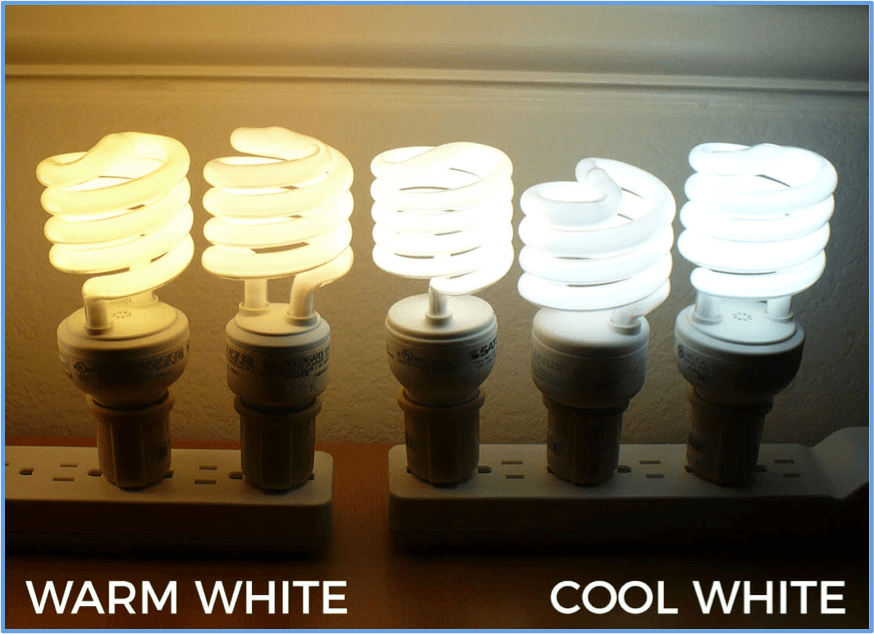
If you’re shopping for a warm white light bulb for the home, look for anything around 2500-3000K, while anything over 4000K would give you a nice cool light.
Alternatively, you can find a wide variety of coloured or colour-changing light bulbs. These will be labelled quite clearly with their colour. ‘RGB’ light bulbs allow you to pick from a variety of different colours.
Watts and lumens
Do not use a light bulb’s wattage to determine its brightness.
The ‘lumens’ rating gives a more accurate indication of how bright a light bulb is. This is especially important when choosing LED light bulbs as they can give out the same brightness as an incandescent light bulb using much less power. For example, an LED light bulb that uses only 5 watts (W) of power emits around the same brightness as a traditional 50W light bulb (see our guide to Light Bulb Testing to find out how we know this).
Bulbs for general household use will typically have a lumens rating (lm) somewhere between 300-800lm. The lumen output of golfball and candle light bulbs may be on the lower end of the scale, as they’re designed for use in smaller lamps, while high-powered outdoor floodlights could emit in excess of 20,000 lumens.
The wattage of a light bulb should still be taken into consideration to make sure it’s compatible with your fittings. The low wattage of LED light bulbs gives you a lot more flexibility, but you should still not exceed the stated wattage of any light fixture.
If you’re still not sure about the difference between watts and lumens, read our guide to Lumens vs Watts.
Bulb life
LED light bulbs are incredibly long lasting compared to their incandescent counterparts. The average rated life of a product will tell you roughly how many hours life you should get out of it before it fails. Importantly, though, don’t mix the rated life up with the manufacturer’s warranty period, as the two may not always be the same.
If an LED light bulb fails within its manufacturer’s warranty period, you are entitled to a replacement light bulb. If it fails outside of this period, you are not, even if the light bulb has not reached the average rated life stated on the product.
The manufacturer’s warranty should be stated clearly on any product. Contact us for help if it is not.
Other technical details
The following points aren’t the most important factors in buying a light bulb, but may help you find the perfect one for your needs.
If you’re buying spotlights, the beam angle may be something to think about. Measured in degrees, the beam angle of a light determines how wide or how narrow the beam of light is that the light bulb emits. A 40° beam angle, for instance, would have a very narrow, focused beam suited to retails displays, while a 100° beam angle would cast a wider light more suitable for lighting corridors or larger rooms.
Some light bulbs come with a CRi (Colour Rendering Index) rating. This tells you how well a light bulb reproduces the colours of the environment around it. High CRi light bulbs are useful for photography studios, where capturing the natural colour of objects is really important. If you’re just buying a light bulb for general use in the home, this is likely not something you need to worry too much about.
Choose your finish
In the past, LED light bulbs have been limited in the type of finish they have. These days, the opposite is true, and there are a variety of styles to pick from. If the light bulb is not going to be in view, pick a thermal plastic light bulb, which don’t look as stylish as traditional glass light bulbs, but are often cheaper.
If the light bulb is going to be on show, you can find glass LED light bulbs that mimic the look of traditional incandescent light bulbs, right down to the filaments. Vintage-effect light bulbs can add some retro style to any room.
Opal (sometimes called pearl or frosted) finish light bulbs will give out a softer, more diffuse light than transparent light bulbs. These are good if the light bulb is going to be exposed, as it will reduce glare. It’s not as necessary if the light bulb is going to be hidden by a lampshade, as this may soften the light anyway.
If, by this point, you’re still not sure which light bulb is the right one for you, don’t give up! Have a look at our Help & Advice section, which gives you more detail on a lot of the points above, or failing that, contact our customer service team, who will be more than happy to help you.

